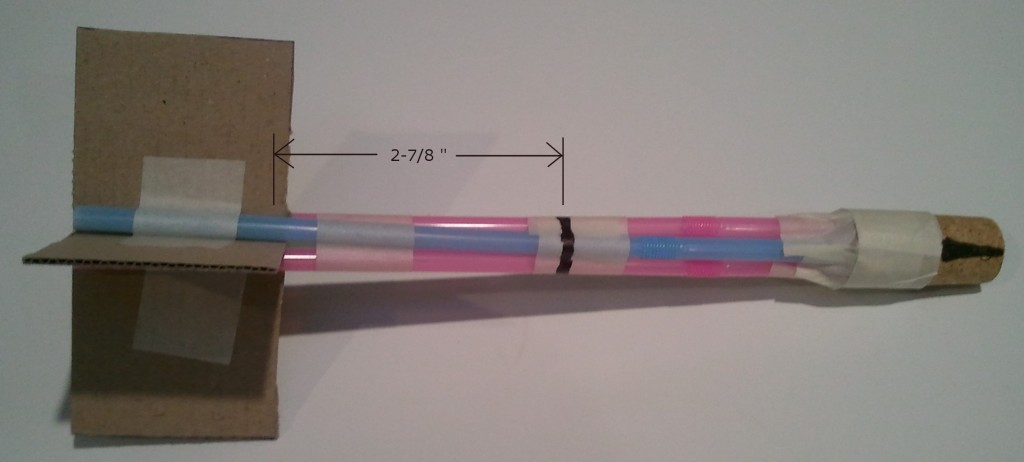I, your friend, Professor Dubois, have returned to reveal all. Well, perhaps not all. By now I am certain that you know that there will always be something that I will leave to your contemplation.
But let us return to our rocket fin test. I trust you have kept your assembly from the last time. We will make a modification that will permit the rocket, or our approximation of one, to be swung around one’s head, with the tip of the device leading the way. Locate a small weight, and attach it to the nose end with tape. I have chosen a wine cork, as you can see from the photo below. It is both exactly the desired amount of weight for our purposes, and it is very safe. This way, there are no worries about injuring anyone should the rocket break loose from your string.
Note that the addition of the cork has moved the balance point, the center of gravity, forward by approximately two and seven-eighths inches. As it happens, this is perfect for our purposes. Also observe the amount of tape that was required for my nose cone. The wine cork was rather slippery, so it was difficult to cause the tape to adhere. You will also find that the blunt end of our nose cone has no effect on the outcome of our experiment. But that is for another discussion.
But all is well. If you attach the string to this new balance point and swing it around your head, the rocket will remain perfectly level and will appear to be traveling straight. We now have a stable rocket, no? Perhaps we have forgotten yet something else? Ah! This rocket has no engine, and the engine has weight, perhaps more than the nose cone. We can simulate this weight, perhaps by taping a pair of corks, or even four corks, to the joints between the fins. But how do we solve the problem? That, mes amis, is more for you to think about. Au revoir.




